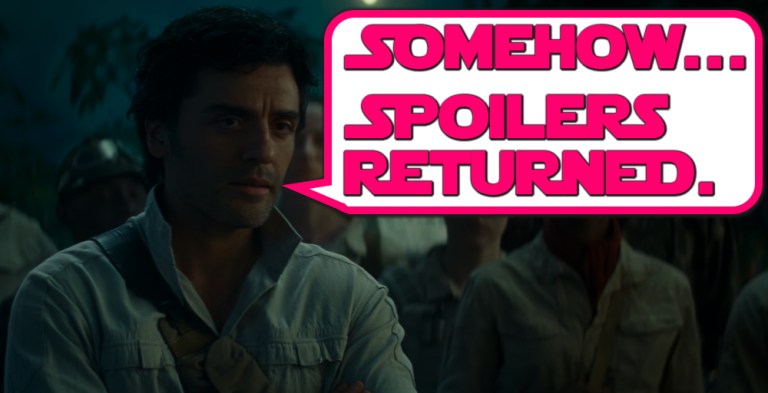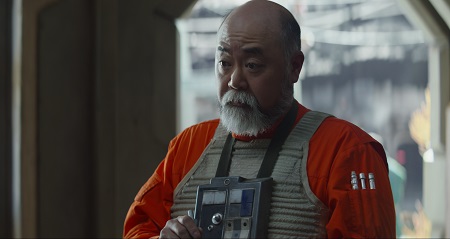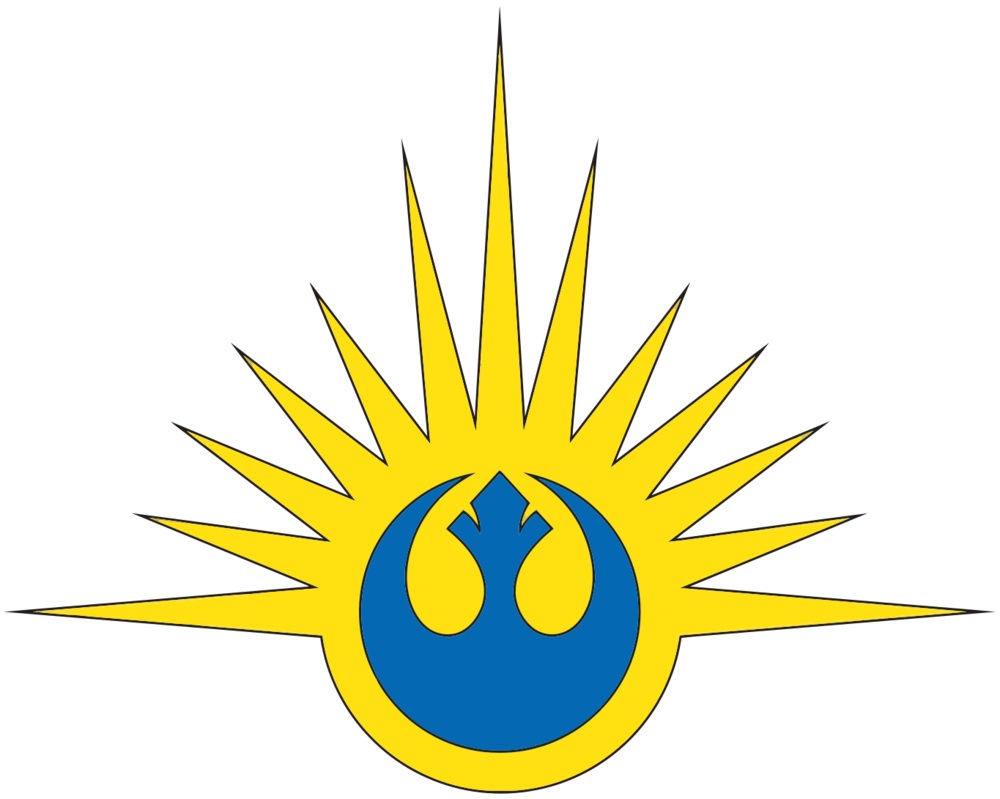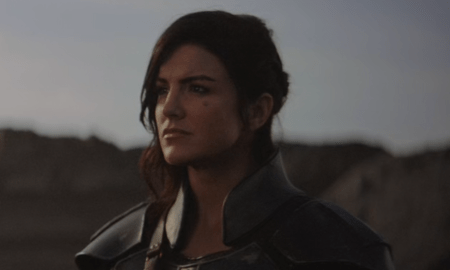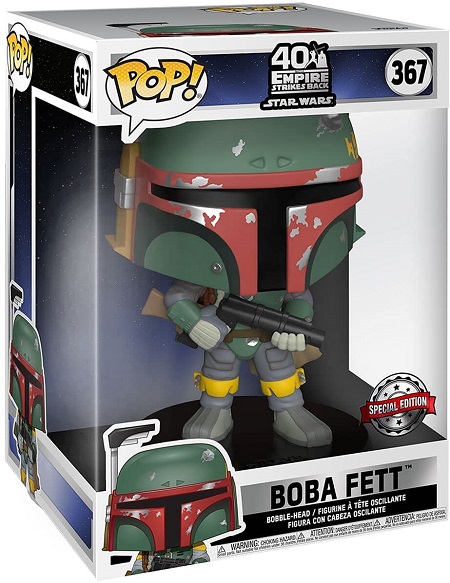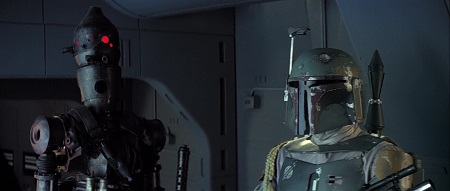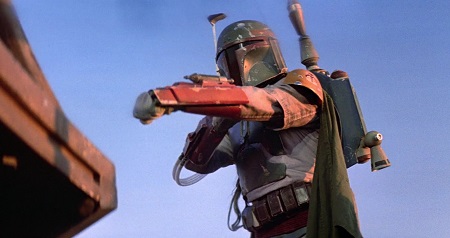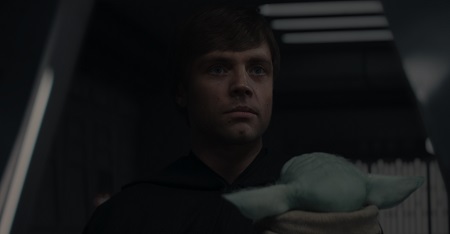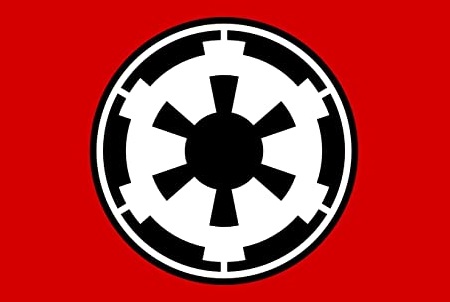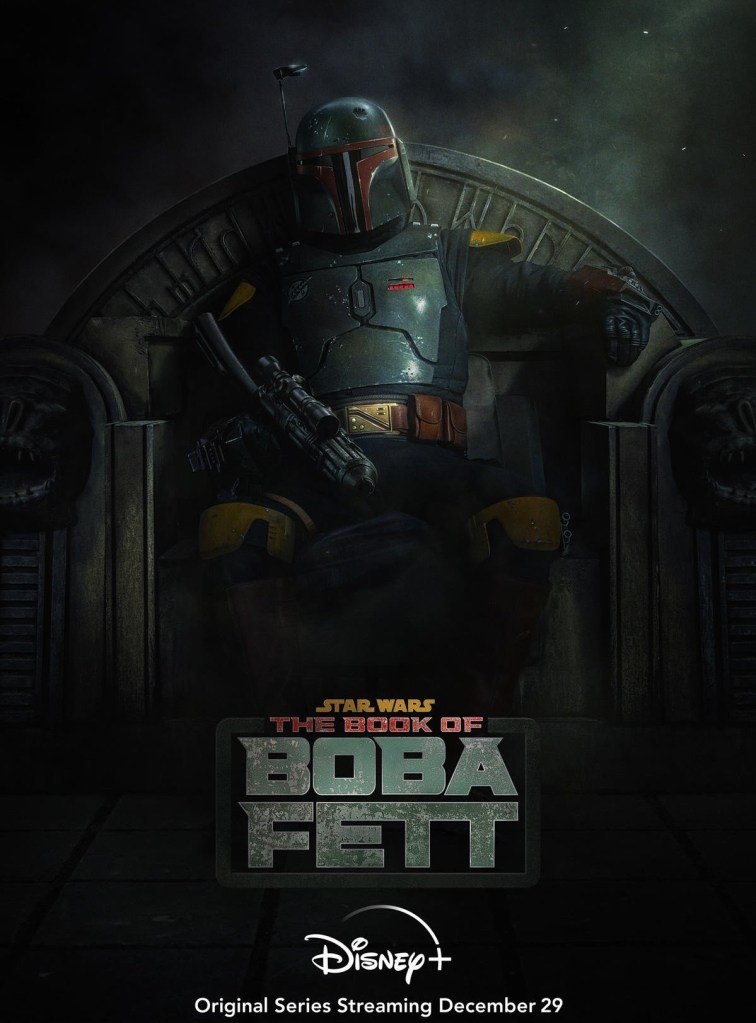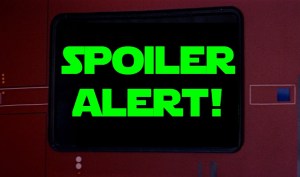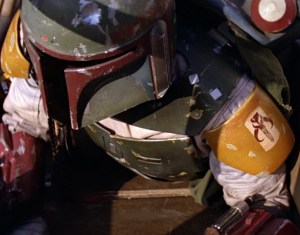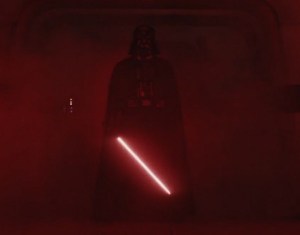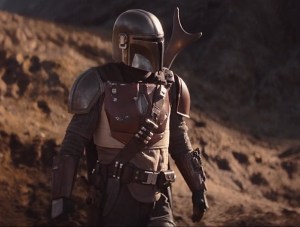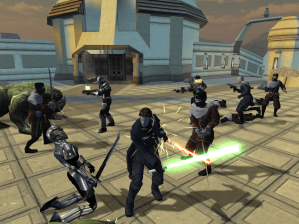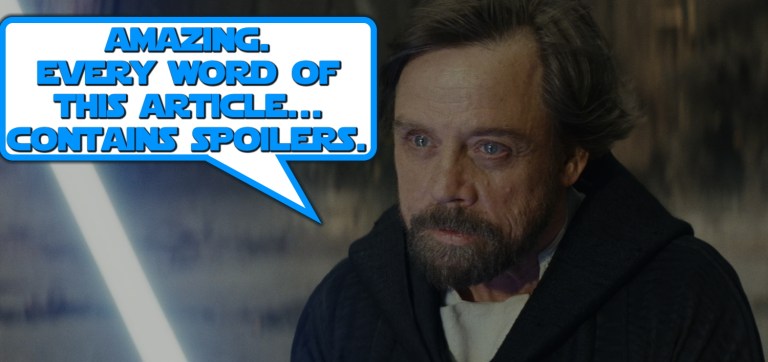
Spoiler Warning: There are spoilers ahead for The Mandalorian, The Book of Boba Fett, The Last Jedi, and other iterations of the Star Wars franchise.
I wasn’t sure what to expect from The Book of Boba Fett when it was unexpectedly announced at the end of The Mandalorian Season 2. I was hopeful for a new series set in the Star Wars galaxy – only the second-ever live-action TV show in this setting – but I’d also felt underwhelmed by both The Mandalorian and a slew of announcements from Disney and Lucasfilm that seemed to be relying far too heavily on Star Wars’ past at the expense of trying anything even slightly new and different.
The Book of Boba Fett was, in many ways, the nostalgia overload that I expected it would be. The show could feel, at times, like executive producers Jon Favreau and Dave Filoni were two Star Wars-loving kids playing with life-size action figures of their favourite characters. Whether it was Boba Fett riding a Rancor monster, Luke Skywalker building his Jedi Academy, the Mandalorian wielding a lightsaber, or characters from The Clone Wars making significant appearances, The Book of Boba Fett had this almost child-like tone that harkened back to the Star Wars adventures kids have enjoyed making up for decades.
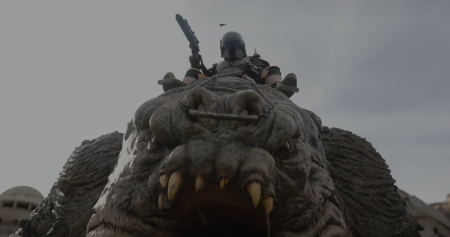
A friend of mine (who is far smarter and more astute than I am) also noted, with a degree of disappointment, that The Book of Boba Fett had a “lighthearted Disneyfied edge” at times, with some of the show’s potentially dark themes of violence and criminality being blunted or just outright ignored in favour of creating something that would work for younger kids as well as teens and adults. And I can’t deny that – several sequences in The Book of Boba Fett could have been transposed into the most basic of Disney Channel comedy shows with barely any adaptation required.
In addition, The Book of Boba Fett relies very heavily on The Mandalorian, to such an extent that anyone who hasn’t watched the previous two seasons would be, I suspect, rather lost – especially in the final two or three episodes in which the titular Boba Fett scarcely features. There was the return of Grogu (Baby Yoda) at Luke Skywalker’s Academy, Din Djarin (Mandy) seeking out the survivors of his Mandalorian clique, the residents of Mos Pelgo and their sheriff, and even the Tatooine mechanic who found him a brand-new ship to replace the destroyed Razor Crest. Though the way in which Mandy was written into the story made a degree of sense – as I can believe he’d feel he owed something to Boba Fett after the way he helped out in The Mandalorian Season 2 – it made the final three episodes of what was only a short seven-episode season feel like the first part of The Mandalorian Season 3.
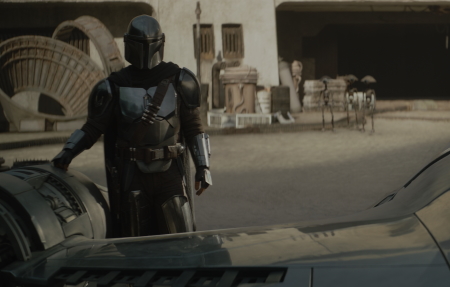
All of the pieces fell into place for The Book of Boba Fett to be a series I’d expect to find completely disappointing… but I didn’t. Even the incredibly weak, hand-wavy explanation for Boba’s survival after Return of the Jedi couldn’t dampen my enthusiasm for what was an enjoyable romp in the Star Wars galaxy, and when I would’ve expected to find myself sighing with disappointment at the overuse of classic characters and other nostalgic crutches, I found myself so immersed in what was a thoroughly engaging story that I just… didn’t. That isn’t to say that The Book of Boba Fett was “perfect,” not by any stretch. But it was fun – despite its imperfections.
It’s words like that that I’d use to describe The Book of Boba Fett. It was a series that had huge entertainment value, depicting a rip-roaring adventure across the sands of Tatooine. Perhaps it’s specifically because of the “Disneyfied” toned-down darker moments, but the show managed to have this incredibly positive, energetic atmosphere that cut through all of the nonsense and amplified the exciting and emotional moments in its story, making it a fun watch almost all the way through.
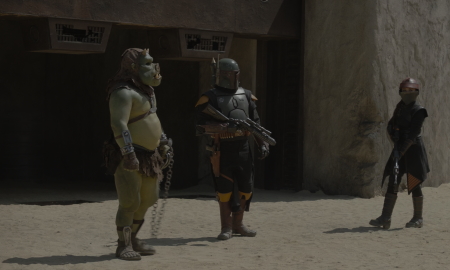
I’m always a sucker for stories about outnumbered heroes, bad guys with “hearts of gold,” and heroic last stands, and The Book of Boba Fett gave me all of those things. Whether it was Boba Fett sneaking into Jabba the Hutt’s palace to steal back his ship, learning to fight like a Tusken raider in the Dune Sea of Tatooine, or the gang coming together to fight off the forces arrayed against them, The Book of Boba Fett packed these exciting and often emotional punches in just the right way for the story to be incredibly enjoyable for me.
If I look at The Book of Boba Fett with a more critical eye, there are absolutely things that I would have changed or chosen not to include. I don’t think, for example, that the sequences with Luke Skywalker and Grogu were especially satisfying when I think about them more deeply. The Mandalorian Season 2 spent basically its entire runtime getting Mandy and Grogu to attract Luke’s attention, and for Luke to then present Grogu with a binary choice – to go with Mandy or train as a Jedi – then to have that choice happen entirely off-screen, effectively rendering everything Mandy did in Season 2 pointless… it leaves a bit of a bad taste. It’s “The Rise of Skywalker problem” – where the next chapter in the story effectively undoes the big narrative moments from the chapter that preceded it.

Also, as some fans far smarter than I am have already pointed out, it feels wrong for Luke Skywalker to offer Grogu such a choice to begin with. We don’t know how much time had passed since the events of The Mandalorian Season 2, but it could perhaps be a few weeks or a few months – a year at the very most. Grogu hadn’t spent much time there nor done much training, so for this choice to be presented to him while he’s at such a young age – and for Luke, whose entire arc in Return of the Jedi had centred around his own attachment to his father while simultaneously being a Jedi Knight – to be the one forcing this choice onto Grogu, are likewise things that feel wrong.
It feels like this side of the story was contrived in such a way as to get Grogu to leave Luke’s Jedi Academy – perhaps so he can have a role in The Mandalorian Season 3, perhaps because there’s something else going on with his character that we don’t yet know, or perhaps because the creators and producers realised that, as things stand, Grogu would almost certainly end up among Kylo Ren’s victims when he betrays Luke – something we saw in the sequel trilogy. As I remarked in my review of The Mandalorian Season 2, this makes Grogu’s whole story feel bittersweet, and given the cute critter’s huge popularity with Star Wars fans and a wider audience in general, maybe this decision was made to save him from that fate.
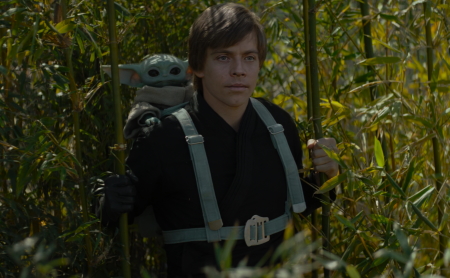
When I took a look at The Mandalorian Season 2, I also said that Luke Skywalker felt like a story crutch for a series – and a franchise – that was too reliant on its own past and on nostalgia plays. The same could apply to The Book of Boba Fett, too. In a series that was already throwing Star Wars’ greatest hits at viewers, the inclusion of Luke Skywalker was pure fan-service. I think it worked better here having been set up in Season 2 of The Mandalorian, and thus didn’t come from nowhere in quite the same way, but I would question whether or not it was strictly necessary to have these sequences in a show that was already so intent on looking backwards.
As I watched the first couple of episodes of The Book of Boba Fett, I thought to myself that, although the reintroduction of this seemingly-dead character was itself a huge “hail Mary” nostalgia throw, at least the series would finally take Star Wars away from the Force, the Jedi, and the Skywalker family. It ultimately failed to do that, bringing all of those elements back into play, and again I just feel that this is indicative of a franchise that doesn’t really know what to do or how to act without the crutch of those safe, comfortable, familiar elements. Star Wars teases viewers with a massive galaxy to explore, but every film and series so far has returned in one way or another to the same handful of characters and the same absolutely minuscule slice of that vast, tantalising setting. I would love for Star Wars to try something genuinely new and different one day, and while I didn’t really expect that from a series based around Boba Fett, it would still have been a bold decision to cut Luke Skywalker and Grogu from the story altogether, and leave the Force behind.
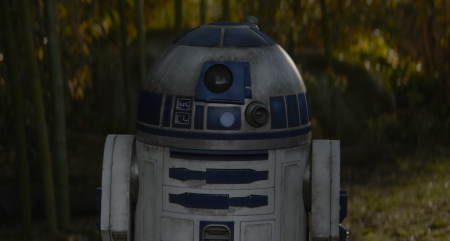
The Book of Boba Fett, perhaps because it was relatively short at a mere seven episodes, wasn’t great at communicating the passage of time. This is also a complaint I’d raised about The Mandalorian, specifically in its first season, but in this case it was made worse by the fact that we were seeing different parts of Boba’s story that seemingly took place months or years apart. From his escape from the Sarlacc and capture by the Tuskens to his acceptance of Tusken culture and raid on the train to his meeting with Fennec Shand, their raid on Jabba’s palace, and then Boba laying claim to the throne… it wasn’t at all clear how much time had passed from one sequence to the next.
At one point Boba mentioned something about “years,” but that felt like little more than clumsy exposition – and didn’t even make clear how long it had been between some of the scenes we saw. Presumably his escape from the Sarlacc and his initial capture by the Tuskens took place within hours of Return of the Jedi – but the rest of it was decidedly muddled and unclear.
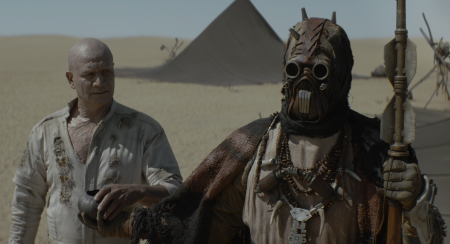
So let’s talk about Boba Fett’s survival, because this was one point I was really interested in prior to the series. For almost forty years it seemed as though Boba Fett was dead. Maybe some works in the old Expanded Universe found fan-fiction nonsense that brought him back, but canonically speaking, Boba Fett was dead. That’s how I interpreted the very unambiguous scene of him falling into the Sarlacc’s maw in Return of the Jedi when I first saw it in the early ’90s – and on every subsequent viewing, come to that. Overcoming that hurdle was something that The Book of Boba Fett had to at least try to do.
In the end, the answer was pretty lame, the sequence raced through pretty quickly, and the answer to this almost-forty-year-old puzzle hand-waved away. Boba Fett survived by essentially shooting and exploding his way out, then collapsed on the sand near the Sarlacc pit. His armour was stolen by scavenging Jawas, and Boba was later rescued – or captured – by Tuskens. It was all over pretty quickly, and while I don’t necessarily feel there’s much to dispute in terms of the basic mechanics of his escape from the Sarlacc – he still had his armour and most of his weapons and explosives as he fell, after all – it was just a bit rushed. It felt like The Book of Boba Fett was trying to brush the details of his survival under the rug so it could race ahead to tell other stories.
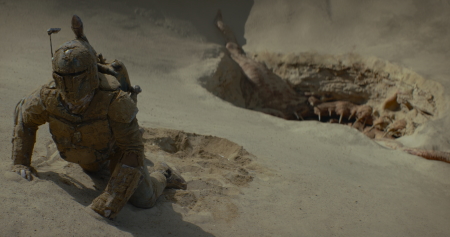
In a series that generally got the feel and tone right, there were a couple of odd choices. The Twi’lek character played by comedian David Pasquesi largely felt out-of-place; an overtly comedic character in what was, for the most part, a series that didn’t seem to be trying too hard to be funny. The biker gang that Boba Fett recruited to his cause were perhaps the oddest-looking group, visually speaking, and their speeder bikes definitely looked out-of-place, being far too bright and colourful in a setting that was otherwise comprised of tans, browns, and other desert tones.
Putting these two together created what was perhaps the worst sequence in the entire series: a slow-speed comedy car chase that felt like it had been lifted out of a Disney Channel movie aimed at a pre-teen audience. Tonally speaking it was just wrong for The Book of Boba Fett, it dragged on far too long, and ultimately added nothing of substance to the show.
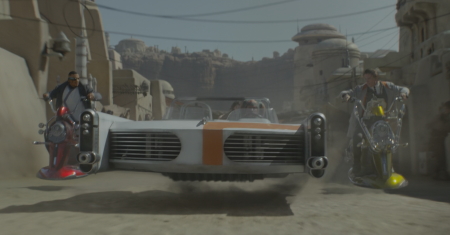
But really, all of those points are glorified nitpicks, and didn’t really detract too much from what was a fun romp. Though there were things I would’ve changed or chosen not to include, taken as a whole package The Book of Boba Fett worked far better than I would have imagined. If you’d told me at the start that the climax of the series would’ve been Boba riding on a Rancor monster fighting alongside Mandy, a Wookie, and Baby Yoda I might not have even bothered to tune in… but the way it got to that point, and even the climactic fight itself, were just plain fun.
Visually, The Book of Boba Fett looked amazing. The CGI work used to create Luke Skywalker was so convincing on my 4K television that I honestly thought I was looking at a real person at first. The Star Wars franchise – and, to be fair, Disney in general – is setting an incredibly high standard for other streaming shows in terms of visuals and special effects, and I hope this high standard of competition will see others raise their game. I’m looking at you, Star Trek – at the very least it would be nice to start getting Star Trek episodes in 4K HDR!
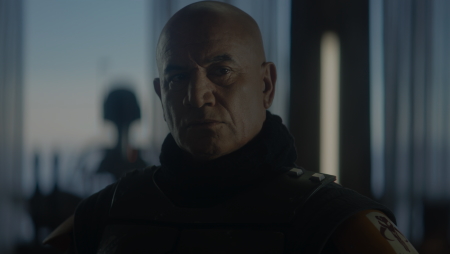
So I think that’s about all I have to say about The Book of Boba Fett. It was a technically polished series with a combination of great practical and digital effects that made it look absolutely fantastic. And it’s set a very high bar for digital character work that other shows – and even films – will struggle to match. Acting performances were fantastic across the board, with everyone giving it their all. The show also had a great, somewhat understated musical score that was pitch-perfect.
Above all, though, The Book of Boba Fett was far more fun than I could have possibly expected. Somehow, a combination of individual elements that seemed on the surface to be weak or otherwise uninspiring came together to build a far better and more entertaining series than should have been possible! I had a hugely enjoyable time with The Book of Boba Fett, and it even succeeded at getting me interested – and, dare I say, even a little excited – for Season 3 of The Mandalorian, which is rumoured to be coming before the end of the year.
After feeling underwhelmed or even disappointed with some recent Star Wars projects, it was nice to be able to kick back and enjoy an exciting, action-packed romp across Tatooine with Boba Fett and his motley crew. At time of writing, a second season of the show hasn’t been confirmed – but it seems almost unfathomable to me that there won’t be more adventures with Boba and Fennec Shand.
The Book of Boba Fett is available to stream now on Disney+. The Star Wars franchise – including The Book of Boba Fett and all other properties mentioned above – is the copyright of Lucasfilm and The Walt Disney Company. This article contains the thoughts and opinions of one person only and is not intended to cause any offence.




